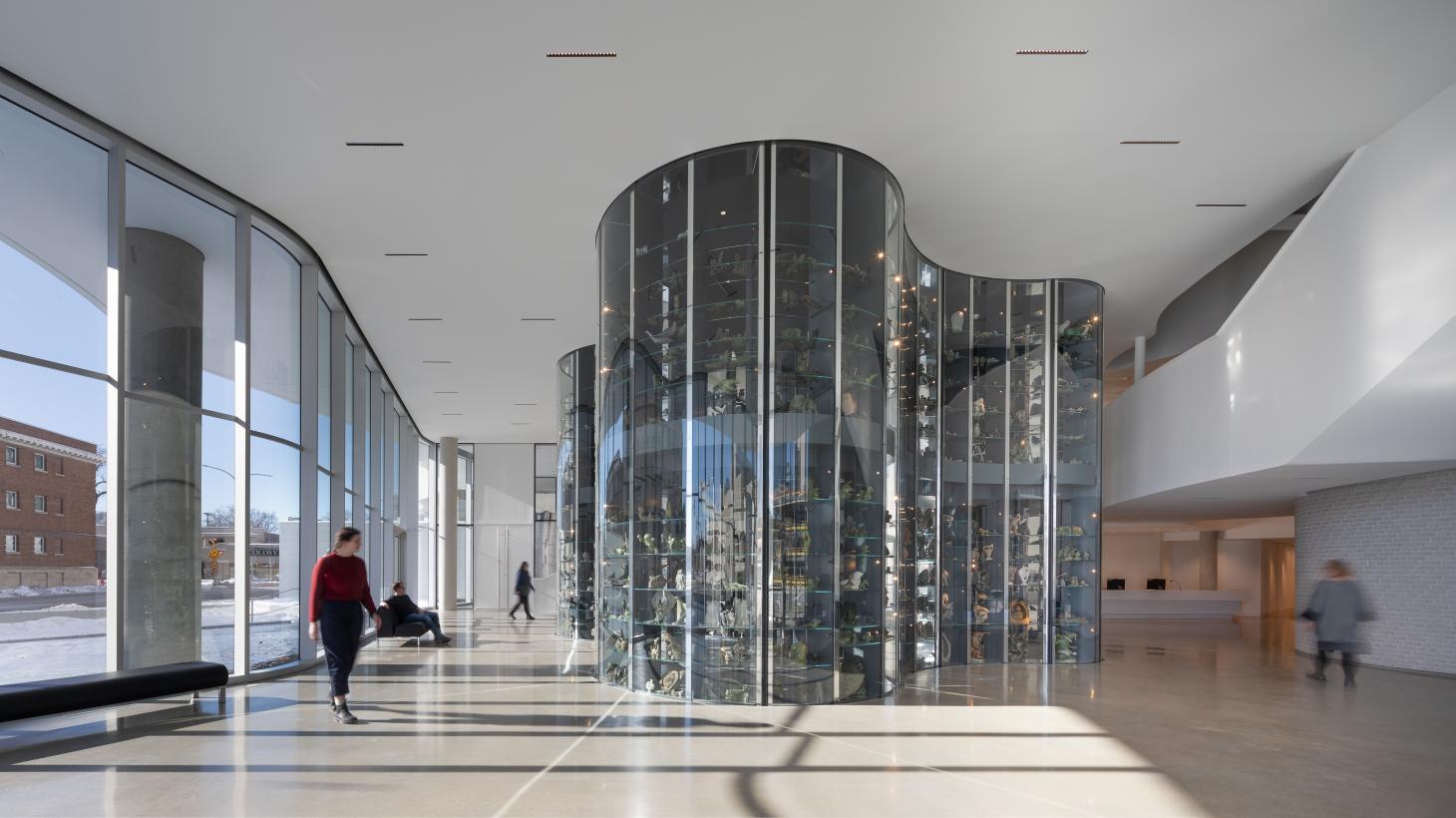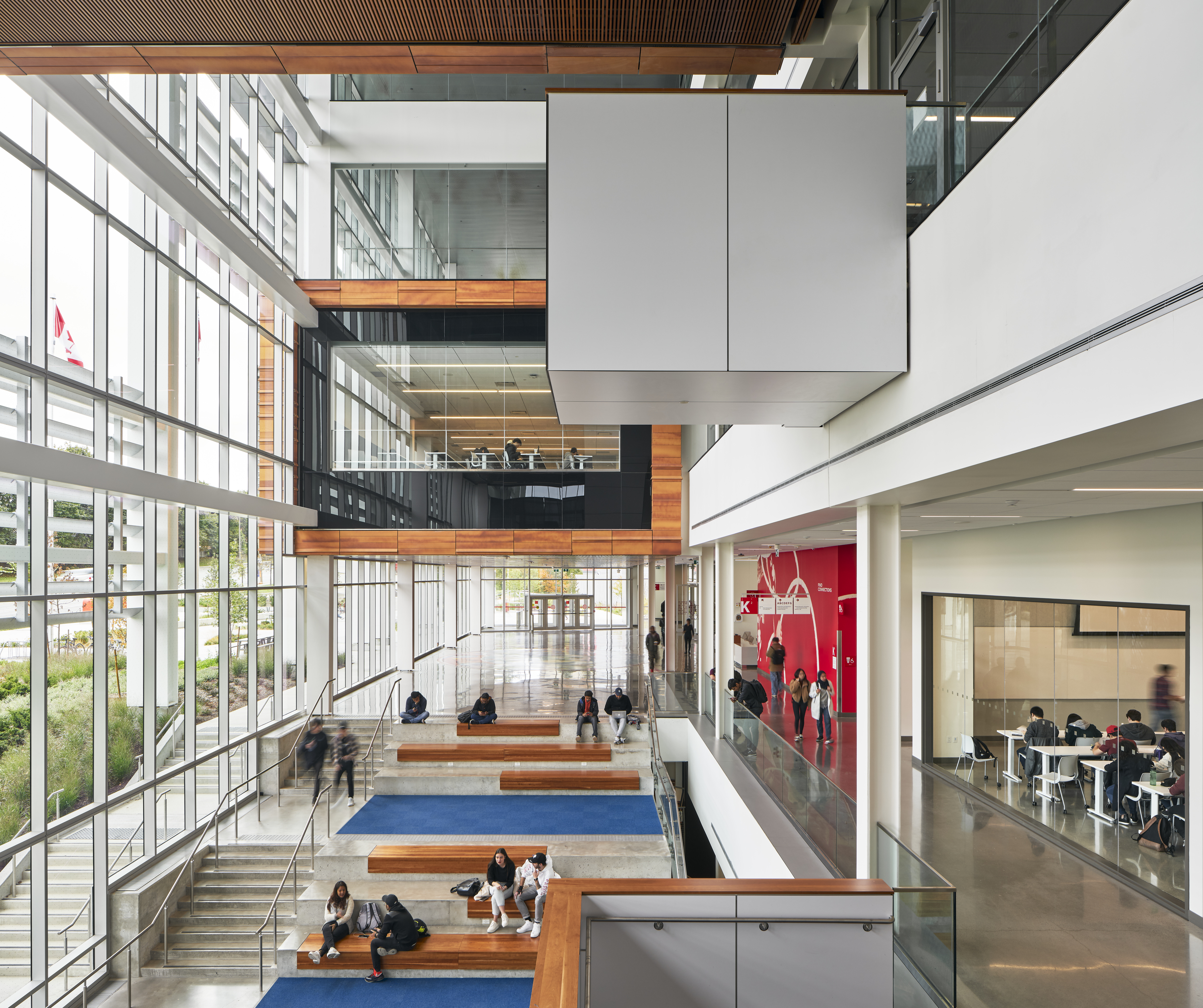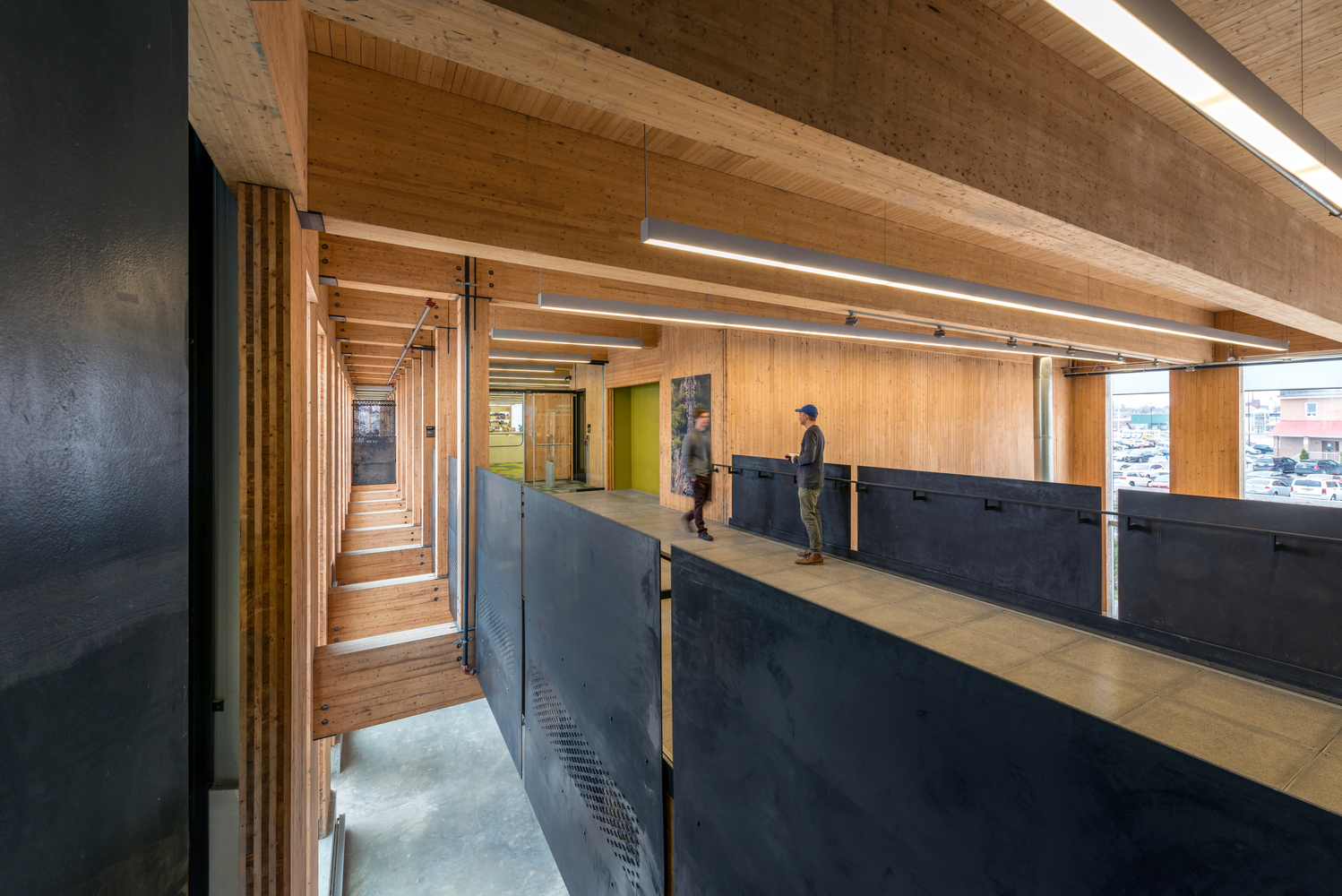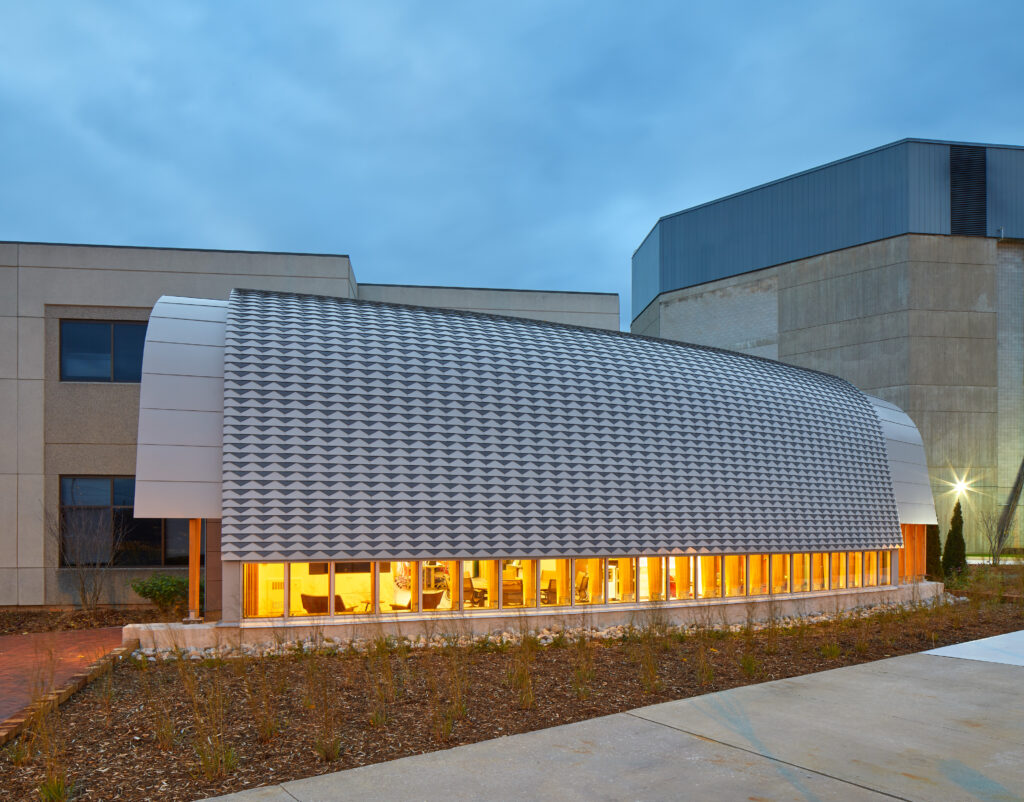
A work by artist Joi T. Arand inside the Indigenous Centre at Seneca College in Toronto.
The Cree syllabics spell out “Don’t be shy.”
More and more architectural firms that are steeped in First Nations traditions are taking on critical roles in public projects. The Truth and Reconciliation Act has been a catalyst for much of that change, but there are other formative reasons why indigeneity is gaining momentum.
The recent opening of the Qaumajug Inuit Art Centre in Winnipeg represents a crucial cultural moment in Canadian history. Its impressive granite form, shaped like a glacial ice floe, is now home to the most extensive collection of Inuit art in the world. Among the building’s many eye-catching features is a glass vault in the front lobby. This is where visitors can closely examine some 5,000 Inuit sculptures that are placed side-by-each along hundreds of glass shelves. The unveiling of such an astounding collection is in lockstep with another big reveal happening across the country – our nation’s slow awakening to the devastating oppression imposed on First Nations people for well over a century.

Some 5,000 Inuit sculptures are on display in the visible vaults of the new Qaumajug Inuit Art Centre in Winnipeg, design by Michael Maltzan. Photo by Lindsay Reid
In 2015, the Truth and Reconciliation Commission (TRC) outlined 94 calls to action that instruct the government and communities on what they can do to reckon with that terrible past. Architecture is not explicitly identified among those 94 calls, but the TRC itself has had a ripple effect on the profession in several ways. A decade ago, indigeneity was rarely considered a valuable aspect of contemporary design. Now, established offices such as KPMB and Perkins and Will are routinely consulting with First Nations architects at the development stage of significant projects.

For a new innovation centre at Seneca College, Perkins and Will engaged native stakeholders in the design process to integrate First Nations’ history into a contemporary building. Photo: doublespace
The uptick, says architect Matthew Hickey, is a direct result of the reconciliation act and the growing awareness that has come with it. Hickey is a principal at Two Row Architects, a Native-owned firm specializing in guiding mainstream ways of thinking toward a more indigenous approach. He and his colleagues have never been busier and are currently collaborating with some 20 non-indigenous firms across southern Ontario.
While new government funding has helped to further enable First Nations consultation on public projects, Hickey and others recognize other factors are also at play. One is the cultural shifts that are happening in post-secondary education. In 2013, the McEwan School of Architecture opened at Laurentian University to focus exclusively on northern architecture. It is the first school to ever do so. Lessons are delivered by Métis and Elders-in-residence and Knowledge Carriers who guide students in First Nation and Métis principles. “It was a radical idea initially, says the school’s Director David Fortin, “but now, across the board, schools throughout Canada, including University of Toronto and OCAD University, are committed to merging Aboriginal practices into curriculums.”

McEwan School of Architecture in Sudbury, Ontario, is the first of its kind to focus on norther architecture and indigenous methodologies. The award-winning campus was designed by LGA of Toronto. Photo: Bob Gundu
Climate change has also played a significant role. Indigenous methodologies, which are guided by a deep respect for nature and building with seven generations in mind are well-suited for addressing sustainably in unique and holistic ways. “Offices that are invested in working with firms like ours,” says Hickey, “are responding to non-Western ways of thinking about buildings and their connection with the environment.” For instance, thinking about landscape not just from an aesthetic point of view but through the lens of eco-systems that support sustenance and pollinators.
What has also become valuable is the introduction of collaborative work, an approach that is fundamental to Aboriginal traditions. When working in teams, the emphasis is on learning and listening first. “We don’t just throw things out there, says Hickey. “There is a lot of back and forth. We implement sharing circles and design charrettes.”
The listening approach is counter-intuitive to the hierarchical style most architecture firms have adopted. “The goal is to create spaces where everyone can speak,” say Hickey. “It takes longer and it’s more demanding, but it is also what makes the job more manageable in the long run.”

Seneca College's Indigenous centre, Odeyto, is shaped like a Haudenosaunee longhouse. Designed by Two Row Architects and Gow Hastings Architects.
By Catherine Osborne